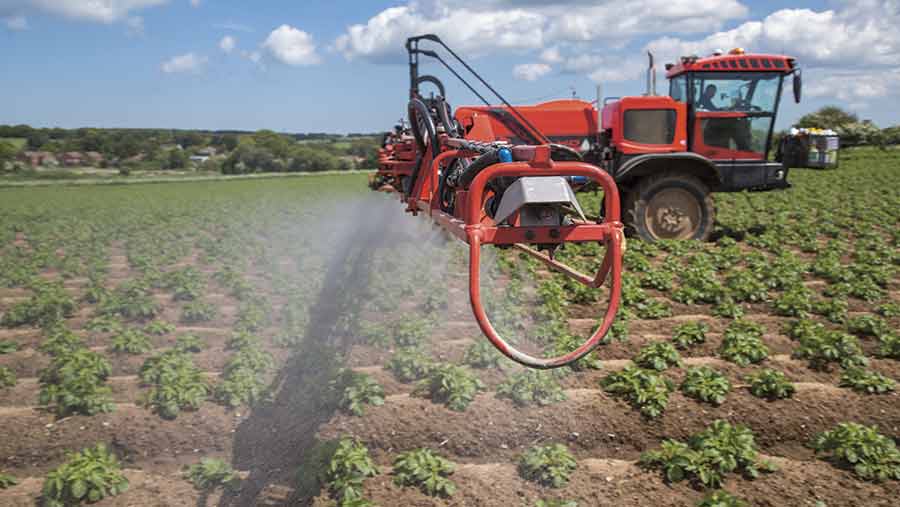Potato growers to benefit from better blight forecasts
 © Gary Naylor
© Gary Naylor An improved method of predicting potato blight outbreaks is to be launched next season, offering more reliable forecasts than the current Smith period method.
New risk criteria for predicting outbreaks of the disease have been developed by researchers from the James Hutton Institute in Scotland.
The current 60-year-old Smith periods system have proved unreliable in recent years because the current aggressive strains of blight are able to infect crops earlier.
See also: How cover crops and chitting practices benefit spud growers
To address this, funding from AHDB Potatoes allowed the Scottish research team to examine the relationship between reported blight outbreaks and recorded Smith periods.
They also considered changes in climate and blight populations, before coming up with the improved system.
Main change
The main change is a reduction in the period of relative humidity at 90% or above needed to trigger a Smith period, explains researcher Siobhan Roisin Dancey of the James Hutton Institute.
The Hutton Criteria brings this down to six hours instead of the current 11 hours.
Validation
Applying the improved system to historic blight outbreaks saw forecast performance rise from 41% to 69%, with more outbreaks receiving alerts.
“What we now have is an improved decision support tool for blight management, which can be used next season to help identify high-risk periods and so protect potato crops.”

